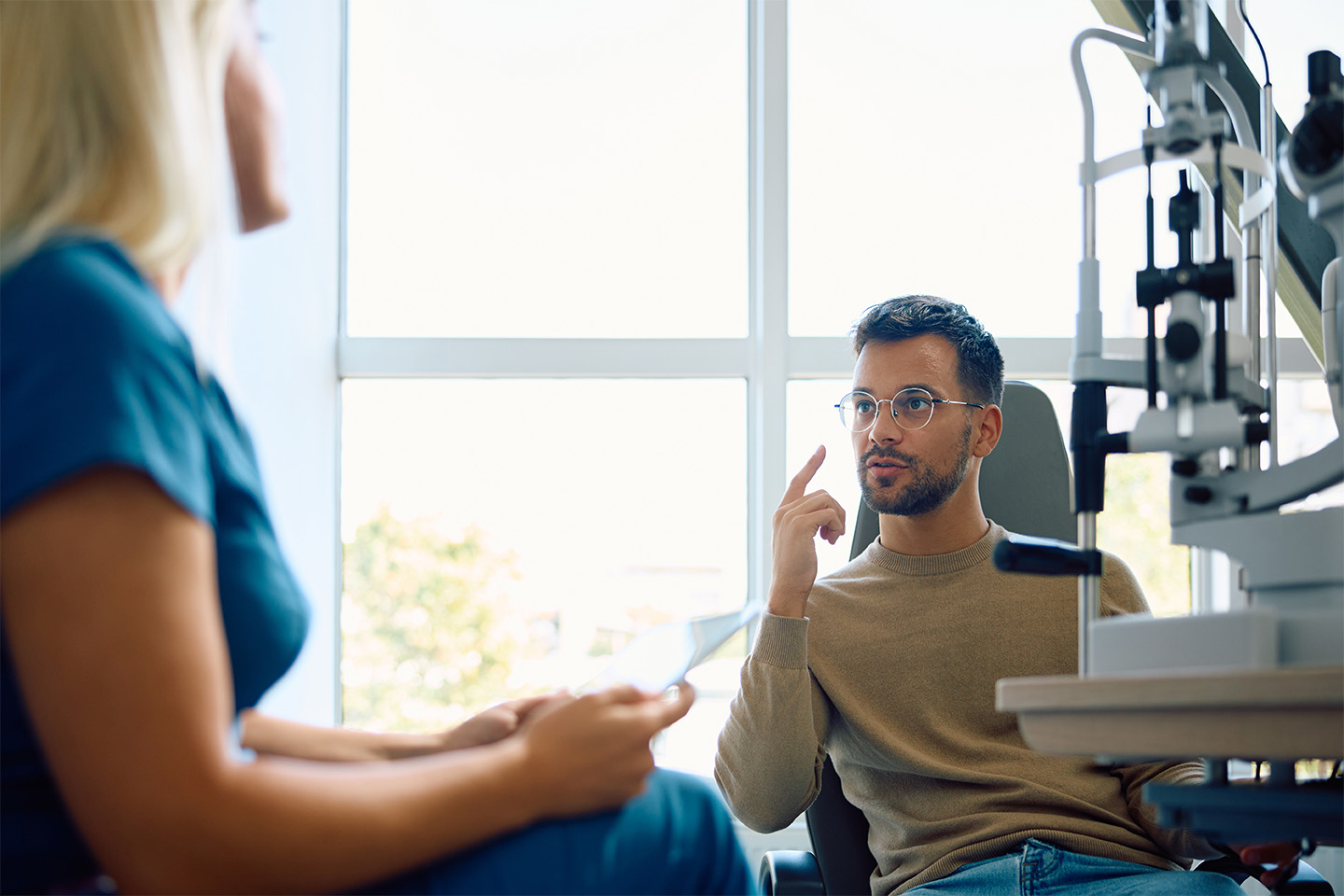How Blue Light from Screens Affects the Eye

We all spend a lot of times in front of screens, but how is that blue light affecting our vision?
Whether you’re a student, working, or retired, you almost certainly log a lot of time on computer or smartphone screens. These devices – phones, tablets, monitors, televisions – have become indispensable tools for our daily lives.
But all of that screen time can be a problem for our eyes. New research shows that too much exposure to “blue light” – the kind issued from modern screens – can lead to an increased risk of retinal cell damage.
Our cultural dependence on screens is still relatively new, and the research on health benefits or detriments is far from conclusive. There’s no need to press the panic button yet, but it can’t hurt to take a look at what we know.
What is Blue Light?
Light exists on a spectrum of wavelengths and colors. Different “colors” of light vary based on their peak wavelength, and blue light has some of the shortest wavelengths on the light spectrum. That’s how scientists can differentiate it from other types of light, but it also differs from other light in the ways that it affects us.
During the day, blue light from the sun promotes wakefulness, alertness, and a good mood. As a result, we’ve been primed by evolution to associate the sun with daytime.
But now that screens have brought blue light into the night, our bodies are getting confused. Some evidence suggests that too much blue light can actually disrupt our circadian rhythm or our internal clock. That’s why experts advise turning off phones and laptops for a bit before bed — otherwise, we may find ourselves tossing and turning all night.
What Blue Light Does to Our Eyes
But blue light isn’t just affecting our sleep cycles; it could be hurting our eyes, too.
The eye has two kinds of photoreceptors: rods and cones. Cones are responsible for conveying colors, while rods see in black and white and are most active in low-light situations. Rods detect light using a molecule called rhodopsin, which is sometimes attached to a protein called retinal. Retinal – a form of Vitamin A – is absolutely necessary for rods to function and therefore, for us to see.
Unfortunately, when blue light hits retinal, it causes the molecule to twist. This twist sets off a complicated chain reaction that damages the cell membrane and causes the cell to lose calcium, which cells need to function. This doesn’t seem to happen with red or green light, or if retinal is not present. Once scientists discovered this reaction, they determined that too much blue light could damage the eye’s rods.
It hasn’t been definitively proven that this process causes significant damage to the eye, but it does line up with some other facts that we know about eye health. For instance, some research suggests that alpha-tocopherol, a form of Vitamin E – prevents the blue light-retinal chain reaction from occurring.
Unfortunately, Vitamin E levels tend to fall as we get older, and scientists believe this might explain why we lose visual acuity as we age. The concern, of course, is that our exposure to large amounts of blue light may make this vision loss more common or occur earlier in life.
For now, the best thing you can do if you’re concerned that blue light might be affecting your vision is to make sure that you see your eye doctor regularly. Your doctor will make sure that your eyes are healthy, evaluate you for corrective interventions like LASIK or other procedures, and work with you to keep your eyes performing at their highest level. Contact Kleiman Evangelista Eye Centers of Texas today to make an appointment.
Turn To The Top Eye Doctors In Texas
Check out one of our locations below for the best eye care near you:









